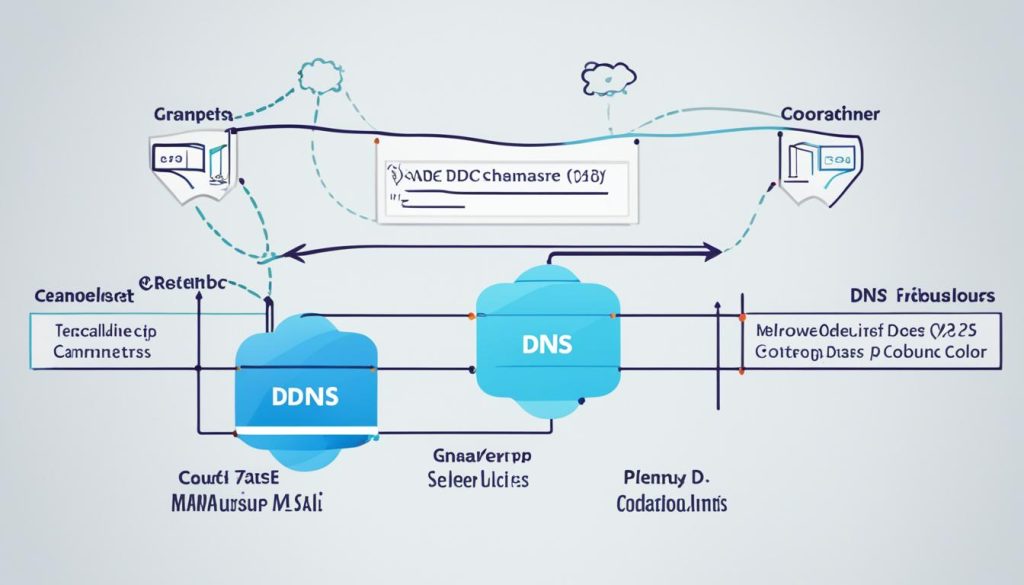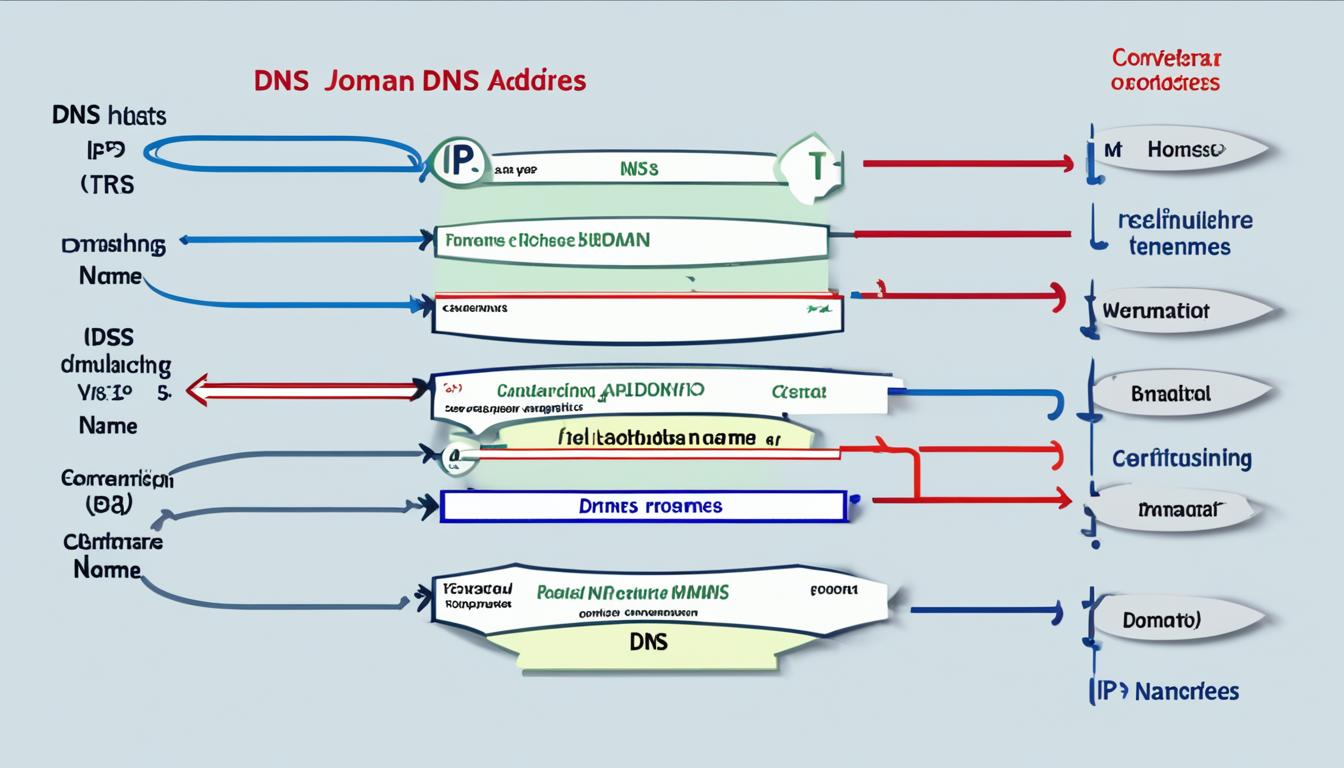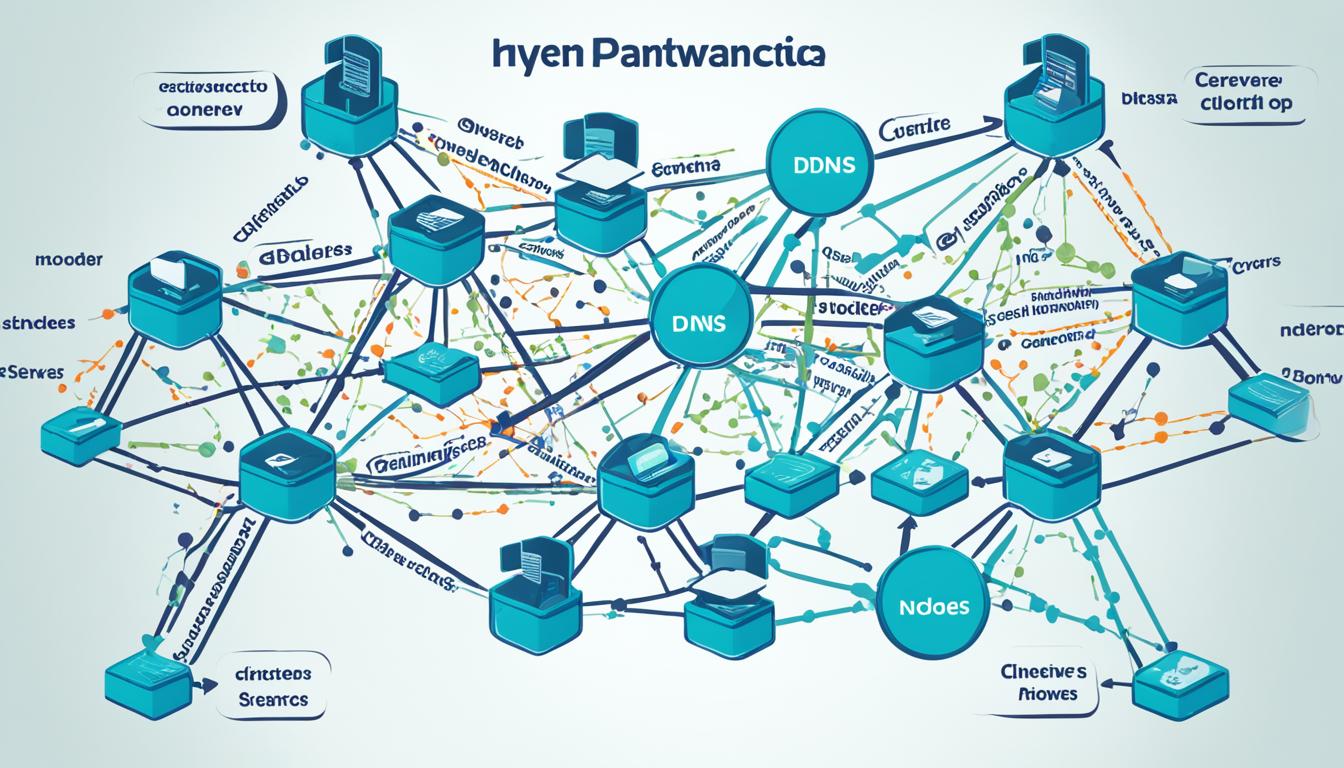DNS Lookup Tool
Did you know that every time you browse the internet, countless interactions with the Domain Name System (DNS) take place behind the scenes? In fact, DNS is responsible for translating domain names into the IP addresses that computers use to communicate with each other. Without DNS, the internet as we know it would cease to exist.
As a copywriting journalist, I’m excited to introduce you to an indispensable tool that will demystify the world of DNS and empower you to troubleshoot and verify DNS records effortlessly. Welcome to our DNS Lookup Tool!
Our user-friendly online tool acts as a DNS resolver, giving you the ability to perform a Domain Name System lookup with ease. Whether you need to check DNS configurations, resolve accessibility issues, or simply gain a deeper understanding of the DNS records associated with a domain, our DNS Lookup Tool has got you covered.
With just a few clicks, you can retrieve accurate information about DNS records from global servers like Google, Cloudflare, OpenDNS, Quad9, Yandex, and authoritative name servers. Our advanced algorithms ensure that the data provided is up-to-date and reliable.
Key Takeaways:
- Our DNS Lookup Tool decodes domain information, such as IP addresses and DNS details.
- It offers quick and accurate DNS record lookup for any domain.
- Our tool helps you troubleshoot DNS records, verify configurations, and resolve accessibility issues.
- We retrieve and display updated information about DNS records from global servers and authoritative name servers.
- The user-friendly interface makes it easy to navigate and obtain the desired information.
How DNS Record Lookup Works
To check DNS records for a specific domain, our DNS lookup tool provides a user-friendly and efficient solution. Simply enter the domain name you want to check into the search bar, and you’re ready to go. You can also specify the server you’d like to use for the lookup by selecting an option from the drop-down menu.
Our DNS lookup tool allows you to narrow down your search by selecting specific DNS record types. Whether you’re interested in A records, AAAA records, CNAME records, MX records, NS records, PTR records, SRV records, SOA records, TXT records, CAA records, DS records, or DNSKEY records, our tool can retrieve the information you need.
After entering the domain name and selecting the desired record types, simply click “Lookup DNS” to initiate the query process. Our tool will run the necessary checks and queries to provide you with all the details you need to check and verify DNS records for the specified domain.
This DNS record lookup process is quick, accurate, and efficient, allowing you to troubleshoot DNS configurations, identify DNS-related issues, and ensure seamless DNS functionality.
Example DNS Lookup:
| Domain | A Record | MX Record | TXT Record |
|---|---|---|---|
| example.com | 93.184.216.34 | mx.example.com | v=spf1 include:spf.example.com -all |
In the example above, we performed a DNS lookup using our tool for the domain “example.com”. The A record for “example.com” is “93.184.216.34”, the MX record points to “mx.example.com” for email routing, and the TXT record specifies the SPF policy for email delivery.
With our DNS record lookup tool, you can easily retrieve and analyze the DNS configurations of any domain, enabling efficient troubleshooting, security enhancement, and DNS optimization.
Understanding DNS
The domain name system (DNS) is an essential part of the internet infrastructure that facilitates the translation of human-readable domain names into machine-readable IP addresses. DNS resolution, also known as DNS lookup, plays a crucial role in this process by mapping a domain name to its corresponding IP address. Let’s delve into the DNS lookup process and explore how it ensures efficient and reliable communication between devices and services on the internet.
To understand DNS resolution, it’s important to know the steps involved in the DNS lookup process:
- The user initiates a request by entering a domain name in their web browser or application.
- The system contacts the recursive DNS servers, which act as intermediaries between the user’s device and the authoritative DNS servers. Recursive DNS servers cache DNS records to expedite future queries, reducing resolution time.
- If the requested DNS record is not available in the recursive DNS server’s cache, it contacts the root nameservers to obtain information about the relevant top-level domain (TLD) nameservers. The TLD nameserver(s) are responsible for handling requests related to specific domain extensions, such as .com, .org, or .ca.
- The recursive DNS server then queries the TLD nameserver(s) to determine the authoritative nameserver(s) associated with the requested domain.
- The authoritative nameserver(s) store the DNS records for the domain. The recursive DNS server contacts the authoritative nameserver(s) to retrieve the necessary DNS record(s) of the domain.
- Finally, the recursive DNS server returns the IP address from the DNS record to the user’s device, enabling the establishment of an internet connection.
This entire process occurs in a matter of milliseconds, allowing users to seamlessly access websites and online services.
Understanding DNS and the DNS lookup process is crucial for anyone working with internet infrastructure, managing domain names, or troubleshooting network issues. By grasping the intricacies of DNS resolution, individuals can optimize their online experience and ensure efficient communication between devices and services.

Types of DNS Lookup
When it comes to DNS lookup, there are two main types: forward DNS lookup and reverse DNS lookup. Each type serves a specific purpose and provides valuable information for different scenarios.
Forward DNS Lookup
Forward DNS lookup is commonly used to find the IP address associated with a domain name. It allows users to input a domain name, such as “example.com,” and obtain the corresponding IP addresses linked to that domain. This type of lookup is essential for establishing network connections and ensuring accurate communication between devices on the internet.
For example, if you want to access a website by its domain name, your computer performs a forward DNS lookup to retrieve the IP address associated with that domain. It then uses that IP address to establish a connection with the web server hosting the website.
Reverse DNS Lookup
Reverse DNS lookup, on the other hand, is used to identify the domain name associated with a given IP address. It works in the opposite direction of forward DNS lookup. Instead of starting with a domain name, you start with an IP address and retrieve the corresponding domain name.
This type of lookup is commonly used by email servers to verify the legitimacy of recipients. By performing a reverse DNS lookup on the IP address of an incoming email, the server can ensure that the domain name associated with the sender’s IP address matches the claimed domain name in the email headers. This helps prevent spam and phishing attempts.
Additionally, reverse DNS lookup can provide valuable information for network troubleshooting and security analysis. It allows network administrators to identify the domain names associated with suspicious IP addresses or trace the origins of potential security threats.
Overall, forward DNS lookup and reverse DNS lookup are two essential types of DNS lookup that play different roles in verifying domain information, establishing network connections, and ensuring online security.

Importance of DNS Record Lookup
DNS record lookup plays a crucial role in various aspects of internet connectivity and service delivery. By performing DNS record lookup, we can ensure efficient domain name resolution, accurate resource mapping, and reliable internet accessibility. Let’s explore the key reasons why DNS record lookup is of utmost importance:
- Domain Name Resolution: DNS record lookup enables the translation of domain names into their corresponding IP addresses. This translation allows computers to locate websites and online services with ease.
- Resource Mapping: Accurate DNS record lookup ensures that resources such as websites, APIs, and cloud services are correctly mapped to their respective IP addresses. This mapping is essential for seamless connectivity and optimized performance.
- Internet Accessibility: DNS record lookup plays a vital role in internet accessibility by accurately translating domain names to the correct IP addresses. This process enables users to access websites and services without any hindrances.
- Email Delivery: DNS record lookup, specifically through MX records, helps in identifying the email server responsible for accepting incoming messages. This ensures successful email delivery and prevents potential communication issues.
- Load Balancing: DNS record lookup supports load balancing by distributing traffic across multiple IP addresses or servers. This optimization technique enhances performance, prevents server overload, and ensures a smooth user experience.
- Failover: In the event of a server failure, DNS record lookup can facilitate failover by redirecting traffic to alternative IP addresses or servers. This redundancy mechanism helps maintain service availability and minimizes downtime.
- Security: DNS record lookup contributes to overall security by supporting mechanisms such as SPF (Sender Policy Framework) and DKIM (DomainKeys Identified Mail). These protocols help prevent email spoofing and ensure the authenticity of email messages.
- Network Troubleshooting: DNS record lookup serves as an essential tool for network troubleshooting. It allows administrators to identify and resolve DNS-related issues that may impact connectivity and service delivery.
Overall, DNS record lookup is a fundamental component of internet infrastructure, playing a critical role in domain name resolution, resource mapping, internet accessibility, email delivery, load balancing, failover, security, and network troubleshooting.
How to Perform DNS Lookup
Performing a DNS lookup is a straightforward process that can be done using command-line tools available on various operating systems. Whether you are using Windows, macOS, or Linux, you can leverage the power of command-line tools to retrieve DNS information for a domain.
Windows:
If you are using Windows, you can utilize the Command Prompt to perform DNS lookup. Follow these steps:
- Open Command Prompt by pressing the Windows key + R, typing “cmd”, and pressing Enter.
- In the Command Prompt window, type
nslookup. - To specify a record type, use the
-type=recordtypecommand. For example, if you want to perform a lookup for the MX record, you can enternslookup -type=MX. - Enter the domain name you want to lookup, and press Enter.
macOS or Linux:
If you are using macOS or Linux, you can utilize the Terminal to perform DNS lookup. Here’s how:
- Open the Terminal application.
- Type
digto begin the DNS lookup. - To specify a record type, use the
-t recordtypecommand. For example, if you want to perform a lookup for the CNAME record, you can enterdig -t CNAME. - Enter the domain name you want to lookup, and press Enter.
These command-line tools allow you to check DNS records and retrieve information about domains from DNS servers. Whether you are a Windows user or prefer macOS or Linux, you can easily perform DNS lookups using the respective command-line tools provided by your operating system.
Don’t forget, if you prefer a more user-friendly and convenient option, you can always use our DNS Lookup Tool, which provides a graphical interface and powerful features to simplify the DNS lookup process.
Online DNS Lookup Tool vs. Command-Line Tools
When it comes to performing DNS lookups, there are two popular methods: using online DNS lookup tools or utilizing command-line tools. As a user, you may wonder which approach is more suitable for your needs. Let’s compare the features and benefits of these two options to help you make an informed decision.
Online DNS lookup tools, like our DNS Lookup Tool, provide a convenient and user-friendly way to perform DNS lookups directly from a web browser. They offer the same functionality as command-line tools but with the added convenience of a graphical interface. By using these tools, you can effortlessly view DNS records, select different servers for lookup, and choose specific record types. This makes them ideal for situations where you need to quickly access DNS information or analyze multiple record types simultaneously.
On the other hand, command-line tools offer more flexibility and customization options for advanced users. Windows users can employ the “nslookup” command in Command Prompt, while macOS and Linux users can utilize the “dig” command in Terminal. These tools allow you to perform DNS lookups, specify record types, and retrieve information about domains from DNS servers. Their command-line interface provides greater control over the lookup process, making them suitable for technical users who prefer a command-line environment.
To summarize, online DNS lookup tools are perfect for users seeking a straightforward and accessible approach to perform DNS lookups. They offer a user-friendly interface, convenient server selection, and easy record type customization. Command-line tools, on the other hand, provide advanced users with more customization options and control over the DNS lookup process. Choose the option that aligns better with your preferences, technical expertise, and the specific requirements of your DNS lookup tasks.
| Online DNS Lookup Tools | Command-Line Tools |
|---|---|
| Convenient and user-friendly interface | More flexibility and customization options |
| Accessible via web browser | Utilized through the command-line interface |
| Server selection and record type customization | Advanced control over the lookup process |
| No installation or command-line expertise required | Suitable for experienced users |
| Efficient for quick DNS record lookup | Offers more detailed information and options |
DNS Lookup Tool for DNS Records and IP addresses
Looking for a comprehensive DNS lookup tool that provides detailed information about DNS records and IP addresses? Look no further! Our DNS lookup tool is designed to make the process effortless and efficient.
With our tool, you can easily check DNS records for any domain and retrieve the corresponding IP addresses. Whether you need to verify DNS configurations, troubleshoot DNS issues, or perform a reverse DNS lookup to find domain names associated with specific IP addresses, our tool has got you covered.
Our DNS lookup tool supports a wide range of record types, including A record, AAAA record, CNAME record, MX record, NS record, PTR record, SRV record, SOA record, TXT record, CAA record, DS record, and DNSKEY record. This means you can access comprehensive information about DNS records to ensure seamless DNS resolution.
Forget the hassle of manual DNS lookups or dealing with complex command-line tools. Try our user-friendly DNS lookup tool today and experience the power of effortless DNS record and IP address lookup!
FAQ
What is a DNS lookup tool?
How does DNS record lookup work?
What is the importance of DNS record lookup?
What are the types of DNS lookup?
How can I perform a DNS lookup?
What is the difference between online DNS lookup tools and command-line tools?
What can I do with a DNS lookup tool?
- How Strategic SEO Drove Growth for a CPAP E-commerce Brand - July 24, 2025
- Top 3 SEO Companies in Toronto: An Analytical Comparison - July 23, 2025
- SEO for Entry Door Services - April 24, 2025





















Post Comment
You must be logged in to post a comment.